
AMD is making a dent in the GPU market with the Radeon RX 5700 XT. Although it is powerful in its own right, there are still some improvements to be made like its cooling. Meet the MSI Radeon RX 5700 XT Gaming X. Based on the same Navi GPU, MSI has boosted the clock speed as well as a beefier cooling solution.
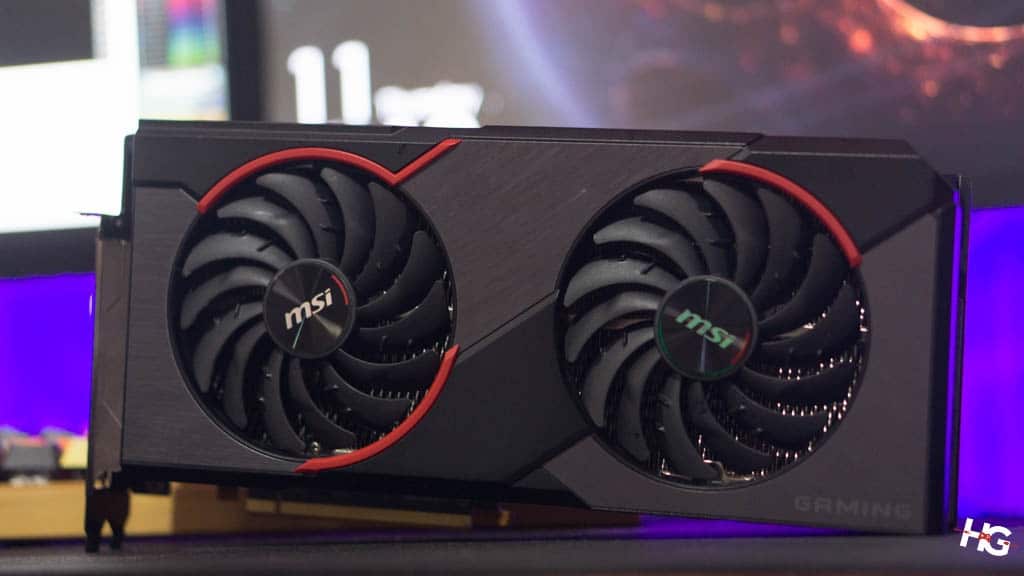
| Model | MSI Radeon RX 5700 XT Gaming X | AMD Radeon RX 5700 XT |
| GPU | Navi 10 | |
| Architecture | RDNA 1 | |
| Transistor Count | 10.3 Billion | |
| Manufacturing Process | 7nm | |
| Base Clock | 1730MHz | 1605MHz |
| Game Clock | 1870MHz | 1755MHz |
| Boost Clock | 1980MHz | 1905MHz |
| Texture Units | 160 | |
| Render Output Units | 64 | |
| Compute Units | 40 | |
| Stream Processors | 2560 | |
| Throughput | 9.75TFLOPs | |
| Memory | 8GB GDDR6, 14Gbps | |
| Memory Bus Width | 256-bit | |
| TDP | 225W | |
| Power Connectors | 2x 8-pin PCIe | 8-pin, 6-pin, PCIe |
| Display Connections | 3x DisplayPort 1.4, HDMI 2.0b | |
| Interface | PCIe 4.0 | |
Before we get into our review, here’s a quick primer about AMD’s latest RDNA architecture and the Navi GPU.
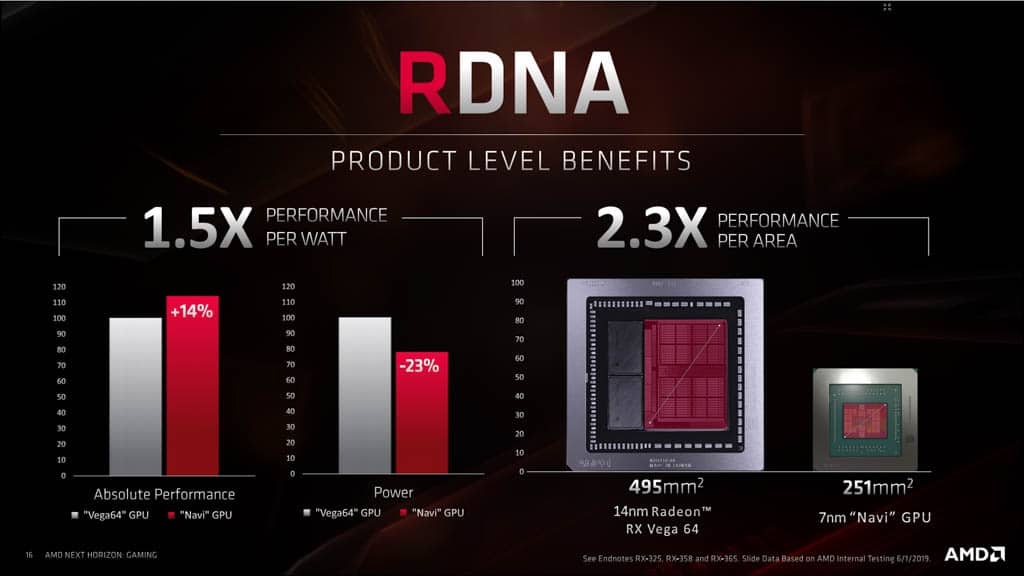
Previous cards of AMD employed the Graphics Core Next (GCN) architecture. This time around, they using their new Radeon DNA (RDNA) architecture. The brand says that RDNA can deliver around 1.5x performance per watt compared to their previous GCN-based Vega 64 GPU.
In addition, RDNA is also promising 2.3x performance per area. This is in direct comparison to the 495mm² die of Vega 64 to the 251mm² of 7nm Navi-based GPUs.
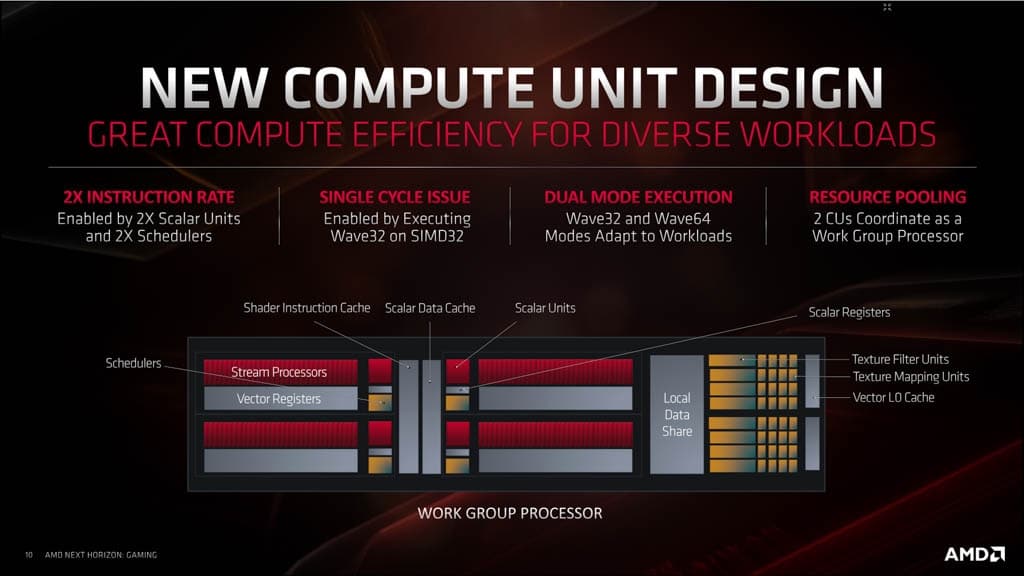
Navi 10, in its full implementation, has 40 Compute Units with each housing 64 stream processors for a total of 2,560 stream processors. Each compute unit is able to pump out more performance by having two scalar units and schedulers. This allows every Compute Unit to have twice the Instruction Rate compared to previous architectures.
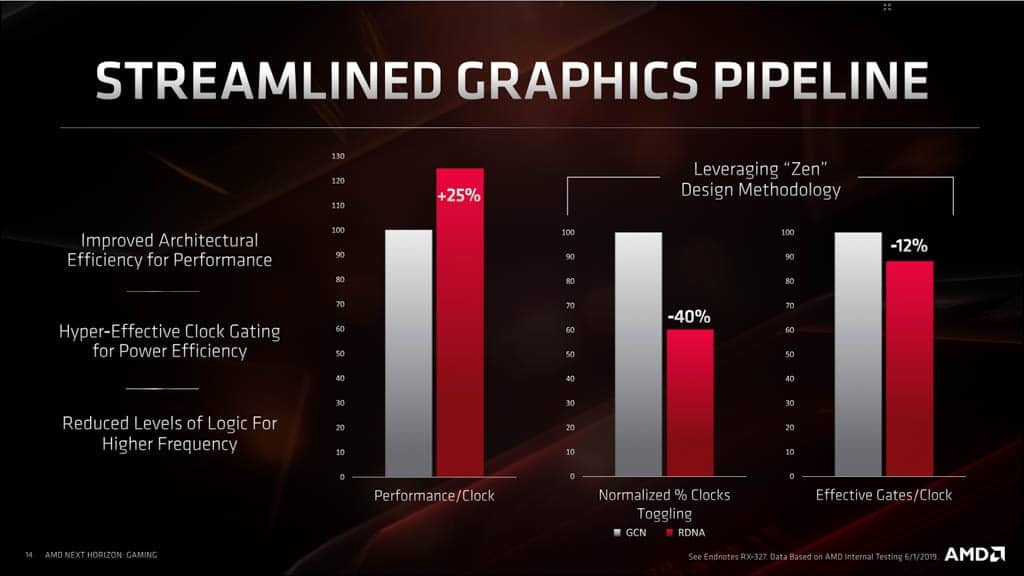
These new Compute Units allow Navi 10 GPUs to have 25% more performance per clock compared to GCN-based GPUs. AMD is also using three new clock speed schemes on their RX 5700 series. On the RX 5700 XT, the GPU comes with three clock speeds: a Base Clock, a Game Clock, and Boost Clock.
Like its name suggests, the GPU’s Base Clock is the lowest clock speed that the GPU can achieve when under load. Boost Clock, meanwhile, is the highest clock speed that the GPU can attain under optimal conditions.
Game Clock, on the other hand, is the clock speed that the GPU averages while in-game. AMD measures this clock speed by running their new cars across 25 separate games and determining its average clock rate.
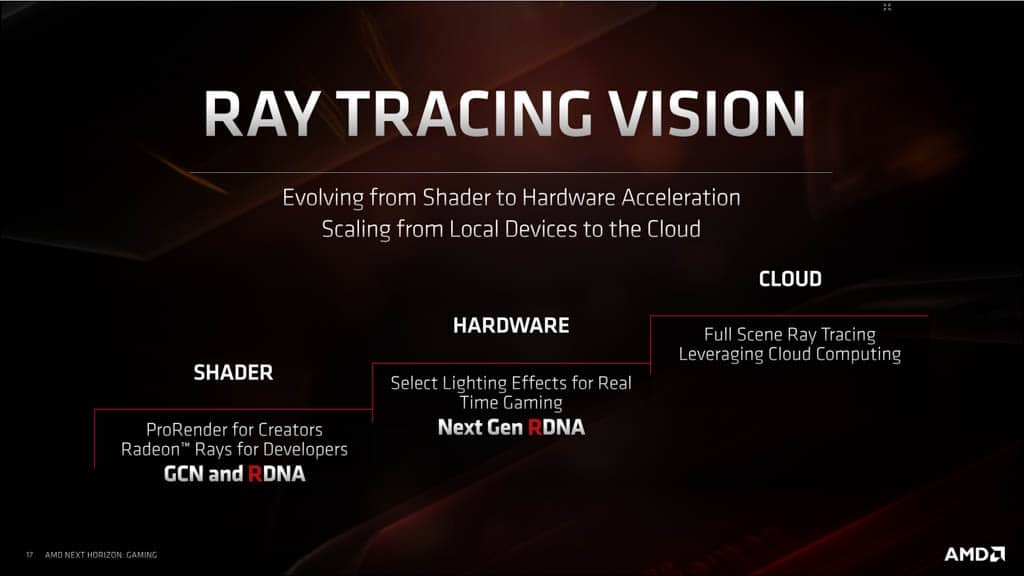
At this time, the RDNA-based GPUs will only support ray tracing via Radeon Rays and Pro Render. AMD, however, is promising hardware-accelerated ray tracing at the dawn of its 7nm+ RDNA2-based GPUs. Based on their roadmap, GPUs that fully support ray tracing will arrive on 2020.
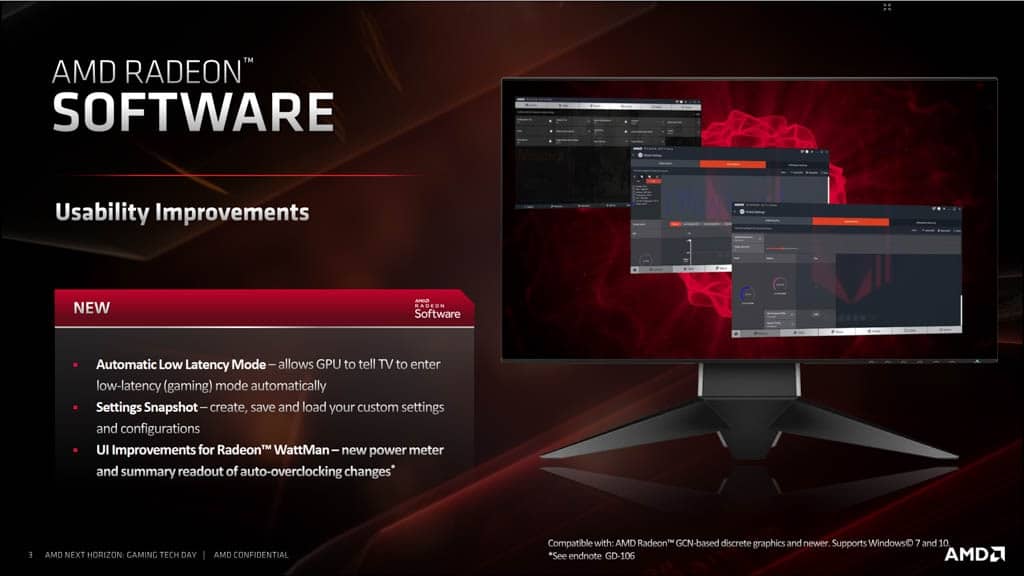
AMD is introducing a couple of new software with the release of the RX 5700 series. First off is AMD Radeon Anti-Lag. This allows whole system to pump out improved input-to-display response time.
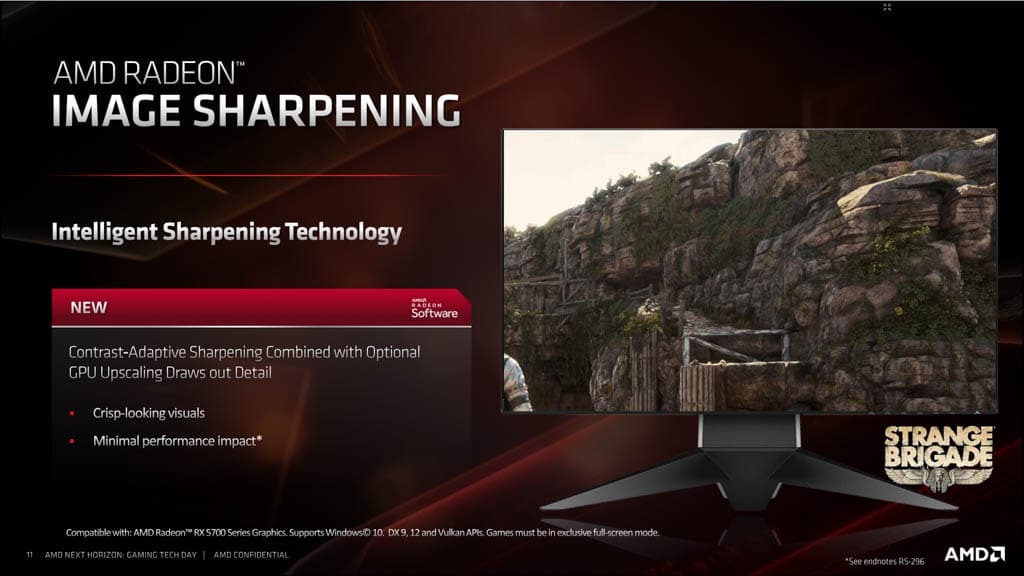
Radeon Image Sharpening (RIS) is being introduced this generation. RIS’ major advantage over NVIDIA DLSS is that developers don’t need to specifically implement this technique. Instead, Radeon Image Sharpening can be controlled via the Radeon Software.
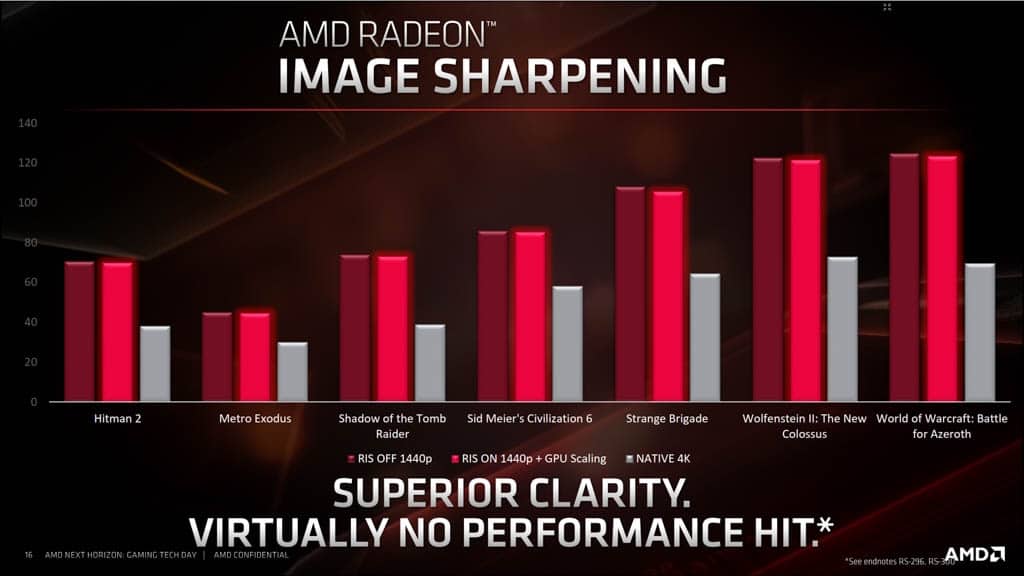
AMD says that their sharpening technique can stays close to the targeted resolution as possible. This means that 1080p images can be upscaled 1440p while 1440p images upscaled to 2160p only have minimal differences compared to native resolutions.
There’s also minimal performance hit with RIS allowing players to enjoy sharper images without much downside.
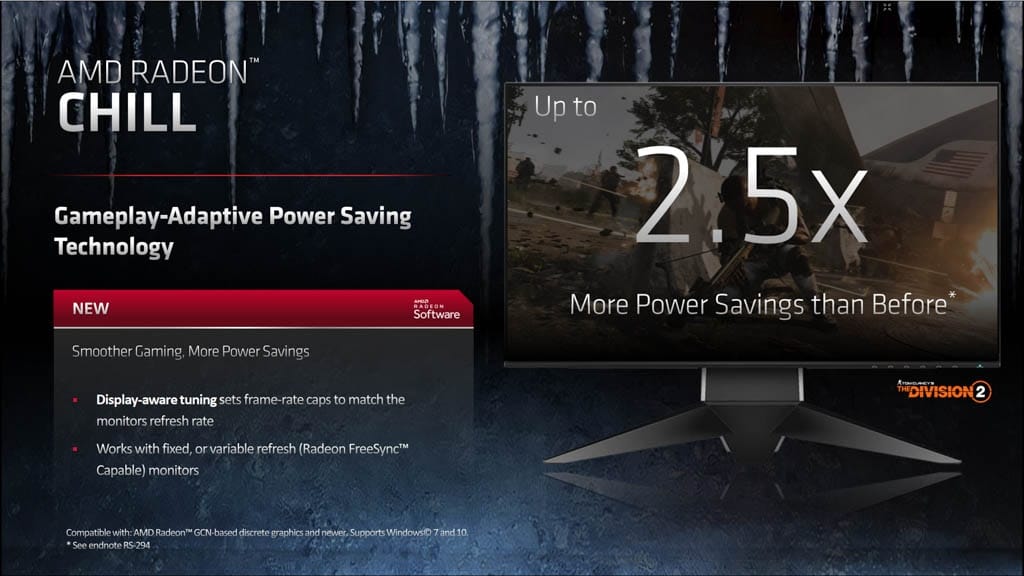
The RX 5700 series will be taking advantage of AMD Radeon Chill. Introduced in Radeon Adrenalin, Radeon Chill allows the GPU to save power whenever it can while in-game.
Radeon Chill regulates the framerate based on the movements while in-game. Essentially, it lowers the GPU performance when you are in a safe area or not moving while pumping up the clocks when movements are fast and erratic.
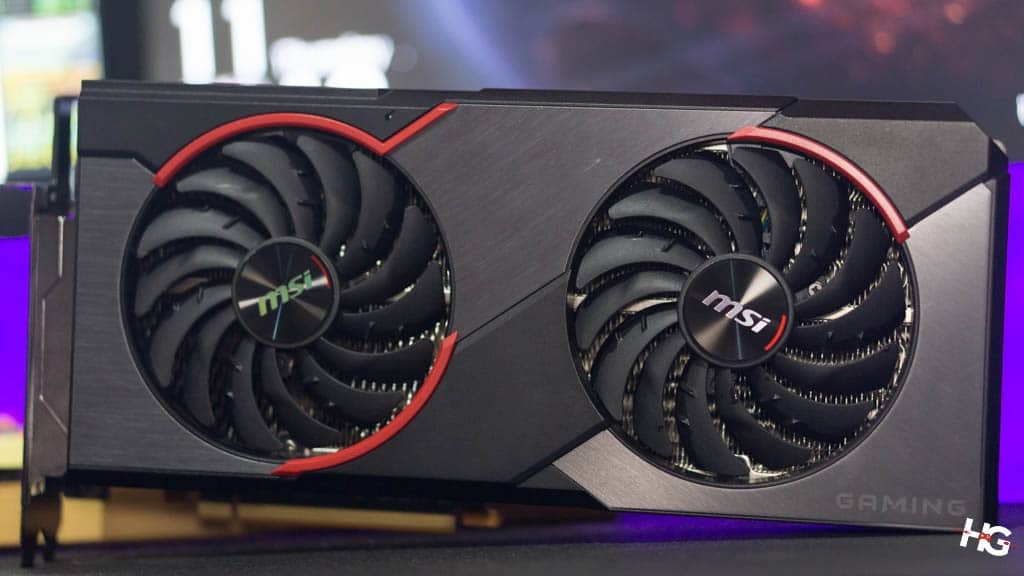
Off the bat, the MSI Radeon RX 5700 XT Gaming X is one thick card. Thanks to its latest revision of MSI’s TWIN FROZR cooling, measuring at 140 x 297 x 58mm (WLH) it will now take 2.5 slots on your expansion slots. It seems that this is becoming more common with recent releases in graphics cards.
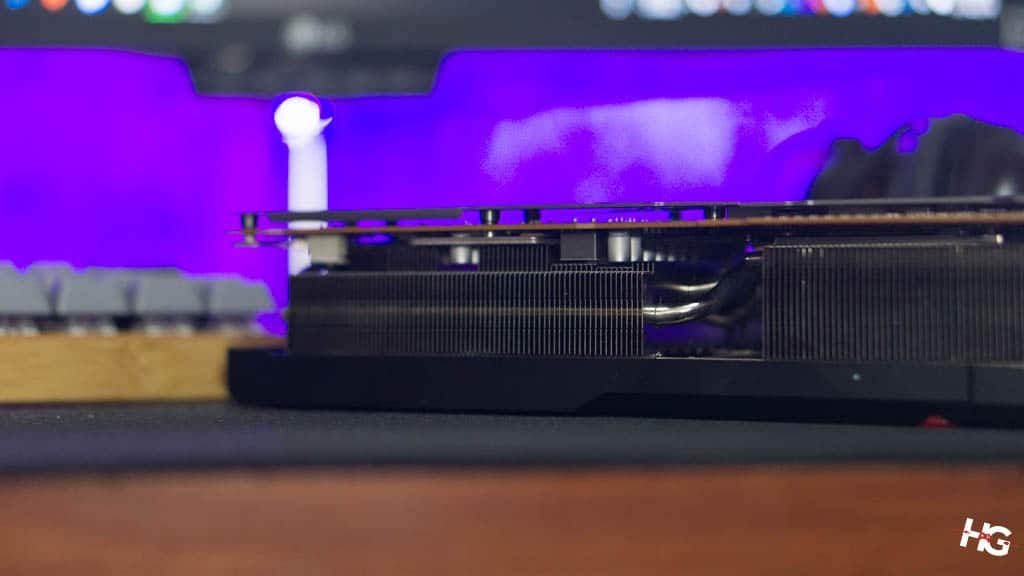
The TWIN FROZ 7 cooling of the RX 5700 XT Gaming X isn’t too far from previous versions. 5 copper heatpipes runs through the length of a card dissipating heat to a massive heat sink. The new Wave Curved Heatsink 2 and its fins allows more airflow to cool down the GPU as well as the VRMs.
The heatsink is tightly bolted to the PCB to allow more heat to transfer from the PCB to the heatsink. Thermal pads are also placed on the memory and VRM modules to eliminate any damage that might incur in high temperatures.

Bringing in fresh air to the card is MSI’s Torx Fan 3.0. A new revision of the Torx Fan series, the two fans found on the MSI Radeon RX 5700 XT Gaming X has 14 fan blades. Half of the blades are Dispersion Fan Blades that comes with a curved blade to accelerate airflow. Meanwhile, the other half are of a traditional fan design for a steady supply of airflow.
The MSI Radeon RX 5700 XT Gaming still comes with ZERO FROZR. This allows the card to operate silently below 60°c by shutting off the fans. When temperatures go beyond 60°c, the fans kick in to allow the card to function optimally.
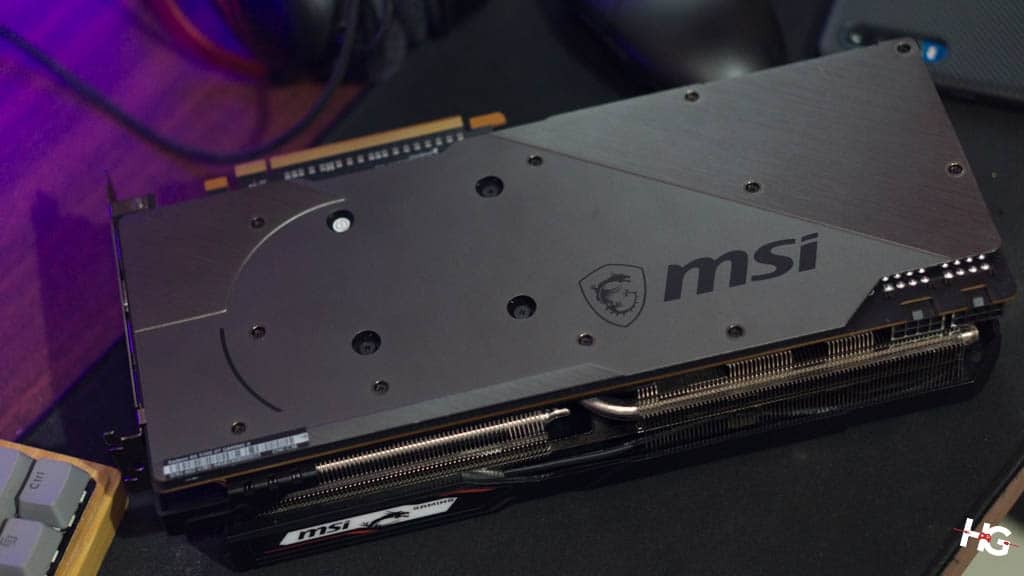
Flanking the video card is a brushed gunmetal gray backplate. Instead of a traditional backplate design, however, MSI is now using what they call “Spaced Armor.” Instead of the backplate sitting almost flush to the PCB, the Radeon RX 5700 XT has around 3.5mm of space between the backplate and the PCB. This allows air to flow through the space to further cool the card.
Thanks to its burly cooling solution, the MSI Radeon RX 5700 XT Gaming X can now reach higher clock speeds while maintaining lower temperatures. In its default configuration, the card will have a Base Clock of up to 1730MHz, a Game Clock of 1870MHz, and a rated Boost Clock of 1980MHz while maintaining the base 225W TDP.
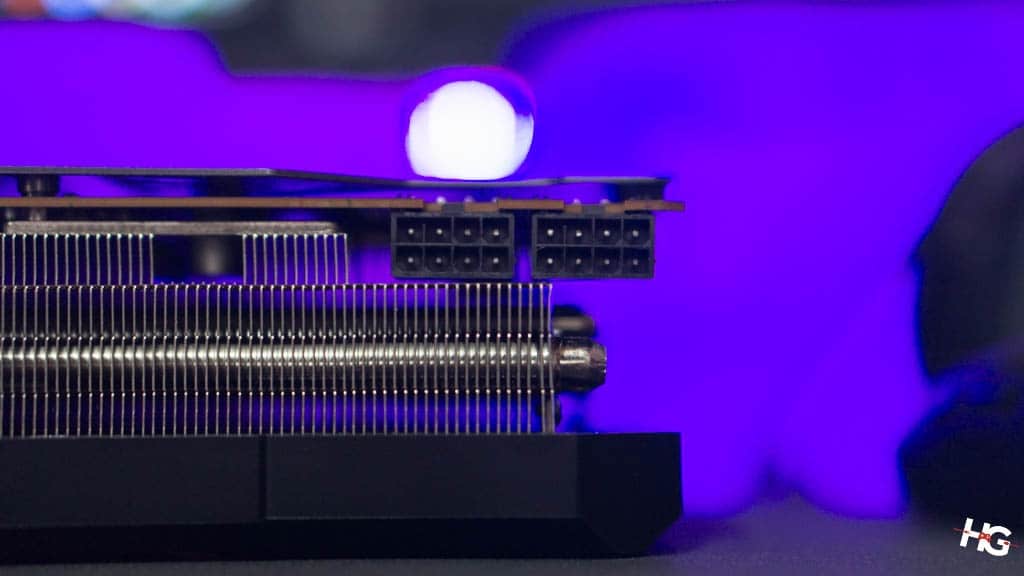
The higher clock speeds do require more power from the PSU. Instead of having an 8 + 6 PCIe connectors, the Radeon RX 5700 XT Gaming X comes with two 8-pin PCIe connectors. Aside from the increase supply of power, this will also allow for more overclocking headroom.
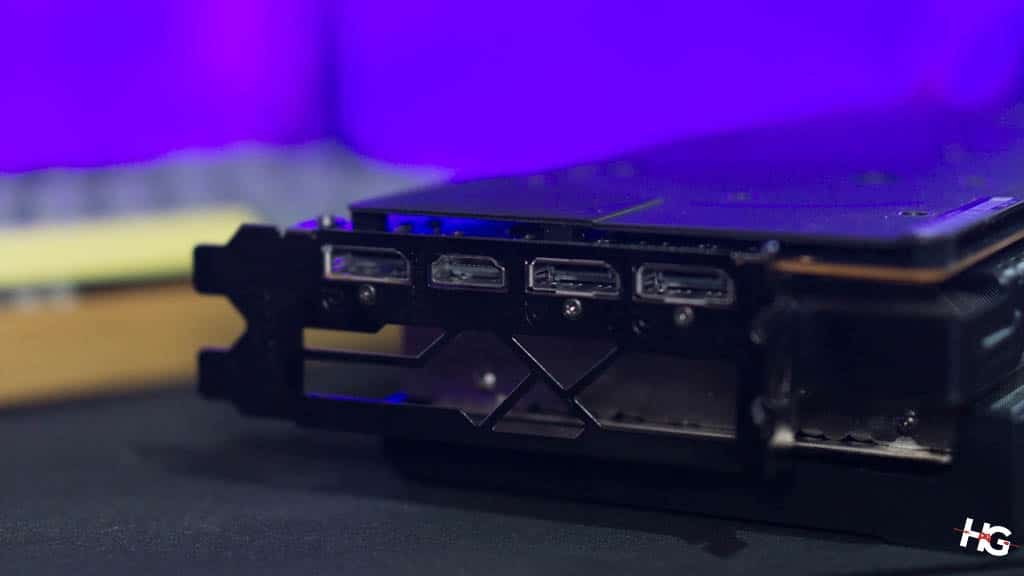
Display connections follow the vanilla design of the RX 5700 XT. At the rear of the MSI Radeon RX 5700 XT Gaming X are three DisplayPort 1.4 ports and a single HDMI 2.0b.
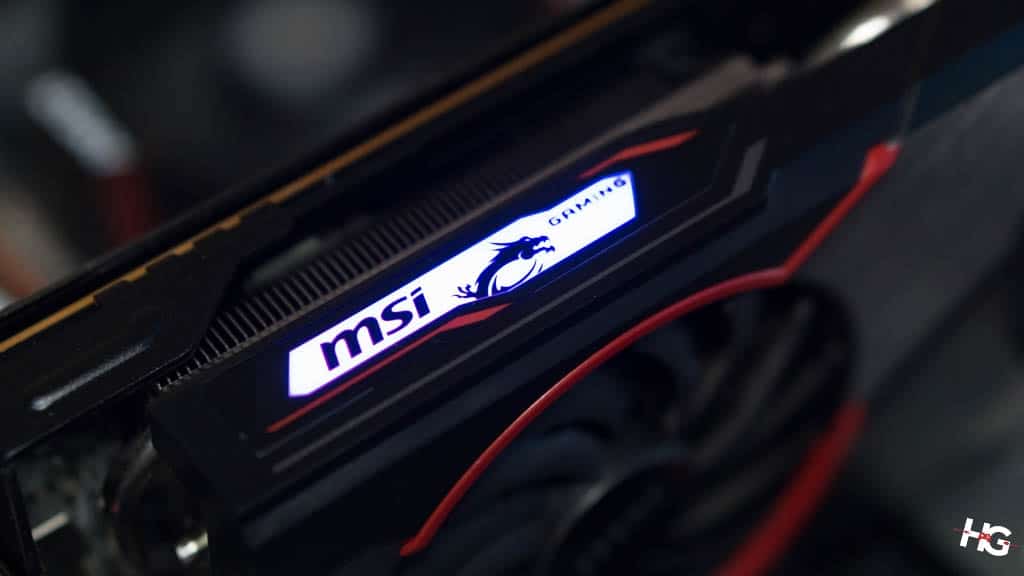
Of course, the card does come with RGB lighting. Instead of lighting the whole card, however, the RGB is only implemented on a tiny MSI screen at the side of the card, which is a tasteful design cue in our opinion.
The RGB Lighting can be controlled via the MSI Dragon Center, which will offer tons of customization and even more so if you have other MSI components and peripherals in your system.
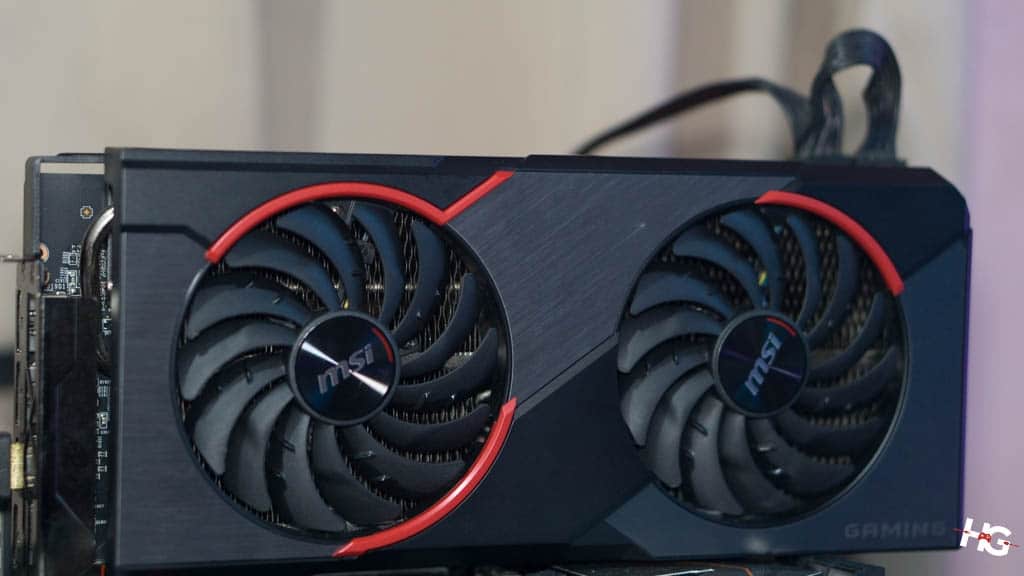
To see how much MSI has improved upon AMD’s design, we plugged the MSI Radeon RX 5700 XT Gaming X to our trusty test bench and run our customary suite of games and synthetic benchmarks.

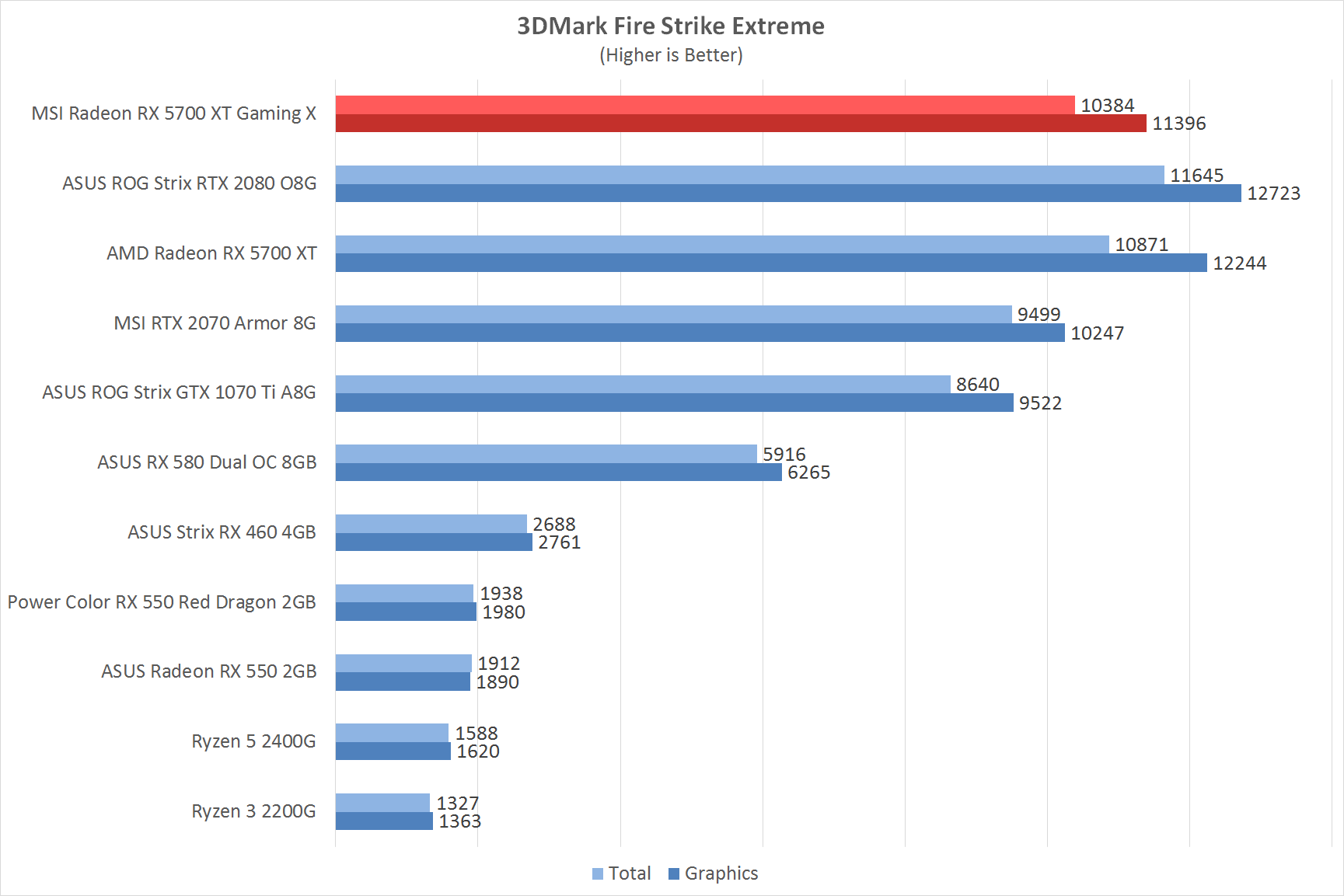
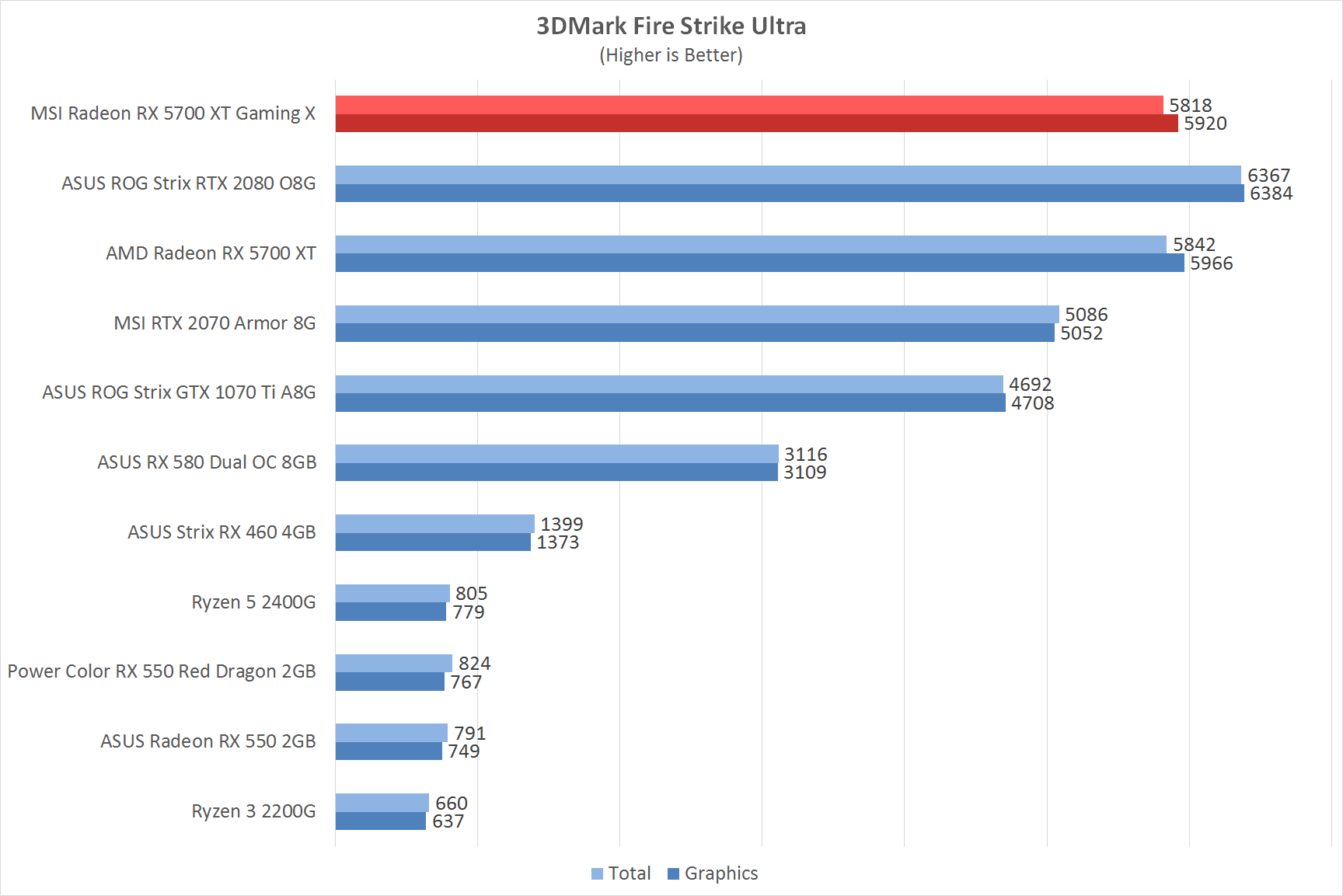
“Designed to showcase the DirectX 11 API, the Futuremark 3DMark Firestrike became a standard in benchmarking as it not only tests the capabilities of the GPU, but also the capabilities of the whole system for a complete stress test.”
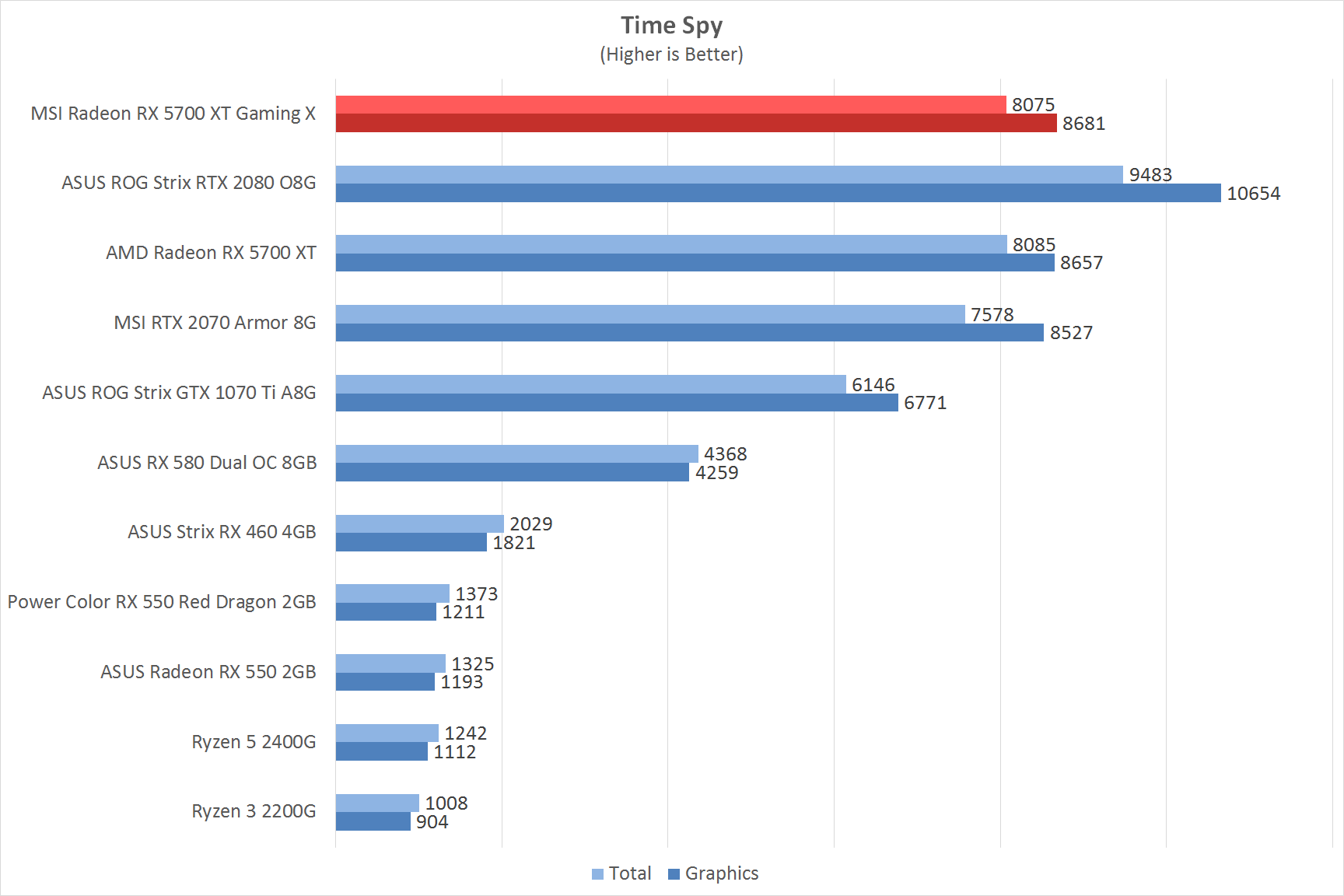
“With its pure DirectX 12 engine, built from the ground up to support new API features like asynchronous compute, explicit multi-adapter, and multi-threading, Time Spy is the ideal benchmark for testing the DirectX 12 performance of modern graphics cards.”
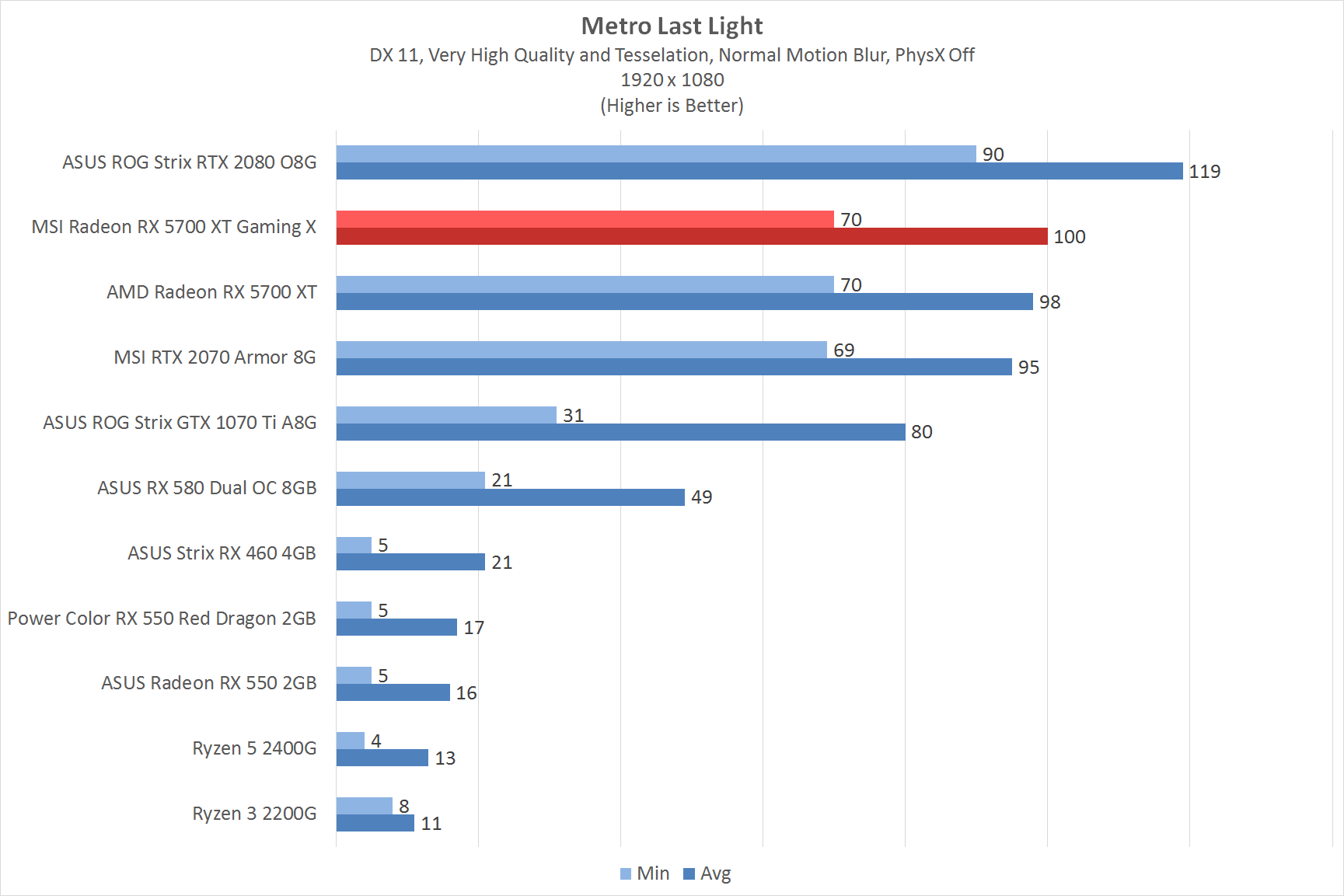
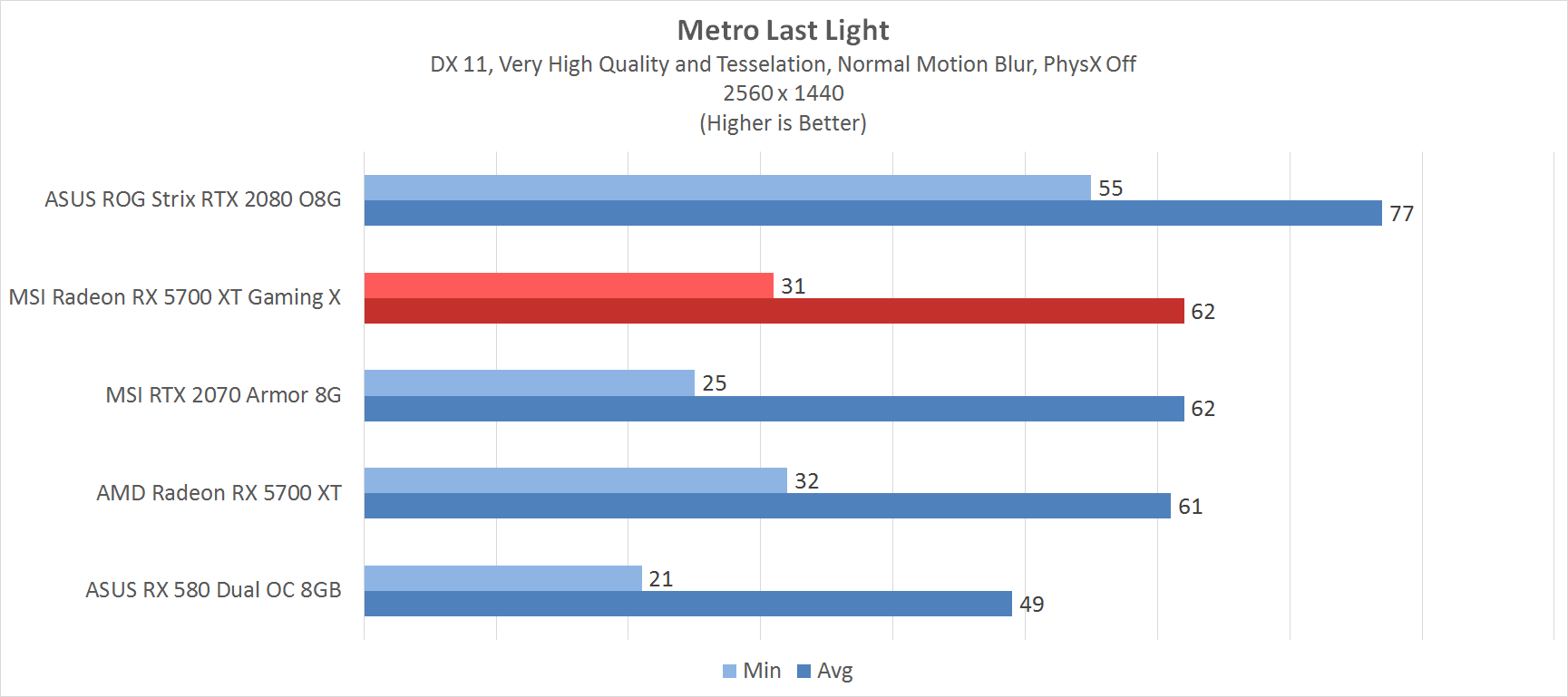
“It is the year 2034. Beneath the ruins of post-apocalyptic Moscow, in the tunnels of the Metro, the remnants of mankind are besieged by deadly threats from outside – and within. Mutants stalk the catacombs beneath the desolate surface, and hunt amidst the poisoned skies above.”
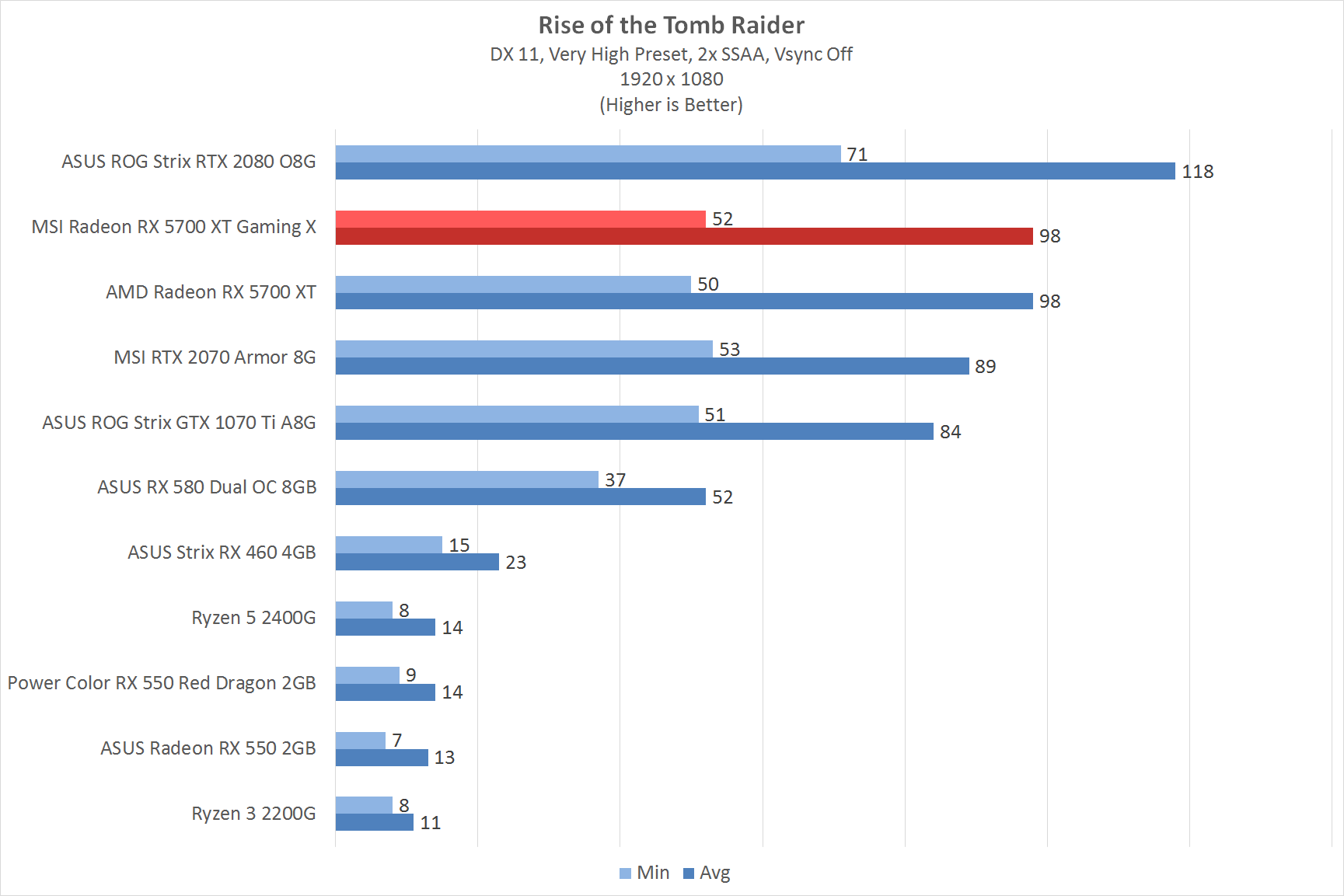
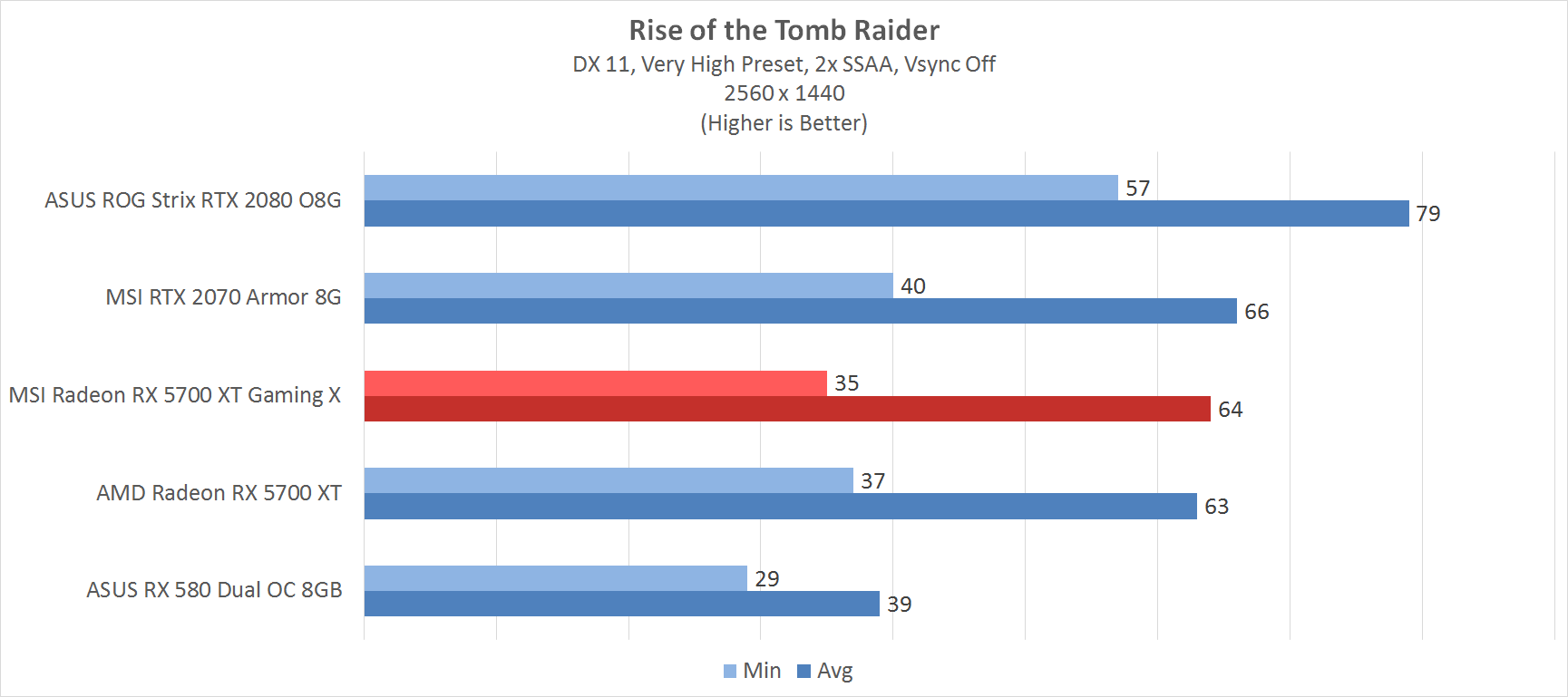
“A follow-up to the reboot of the series, Lara is now searching for a lost treasure that his father was investigating before his passing. Following the same gameplay as Tomb Raider reboot from 2013, the Rise of the Tomb Raider is a worthy title under the Tomb Raider series.”
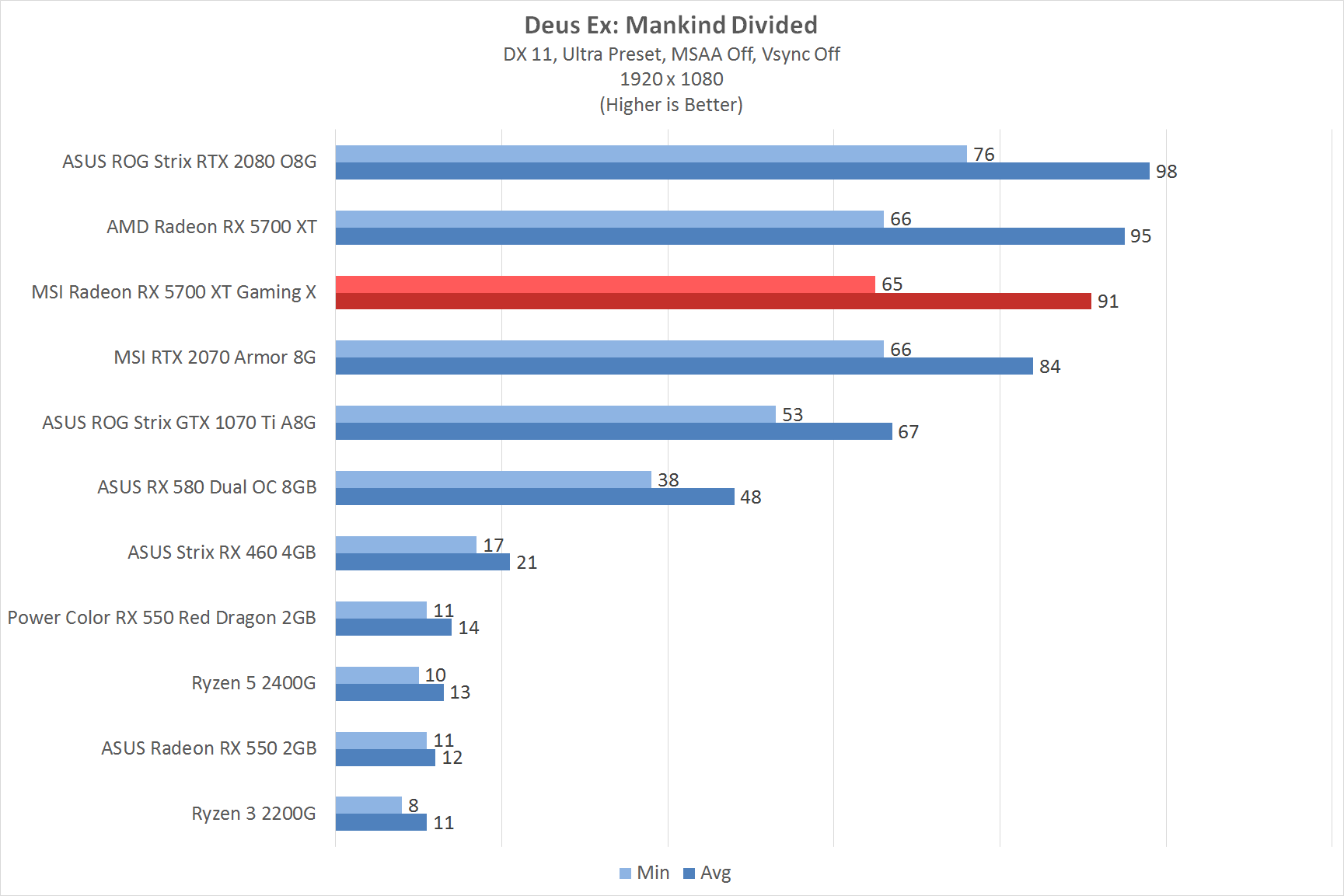
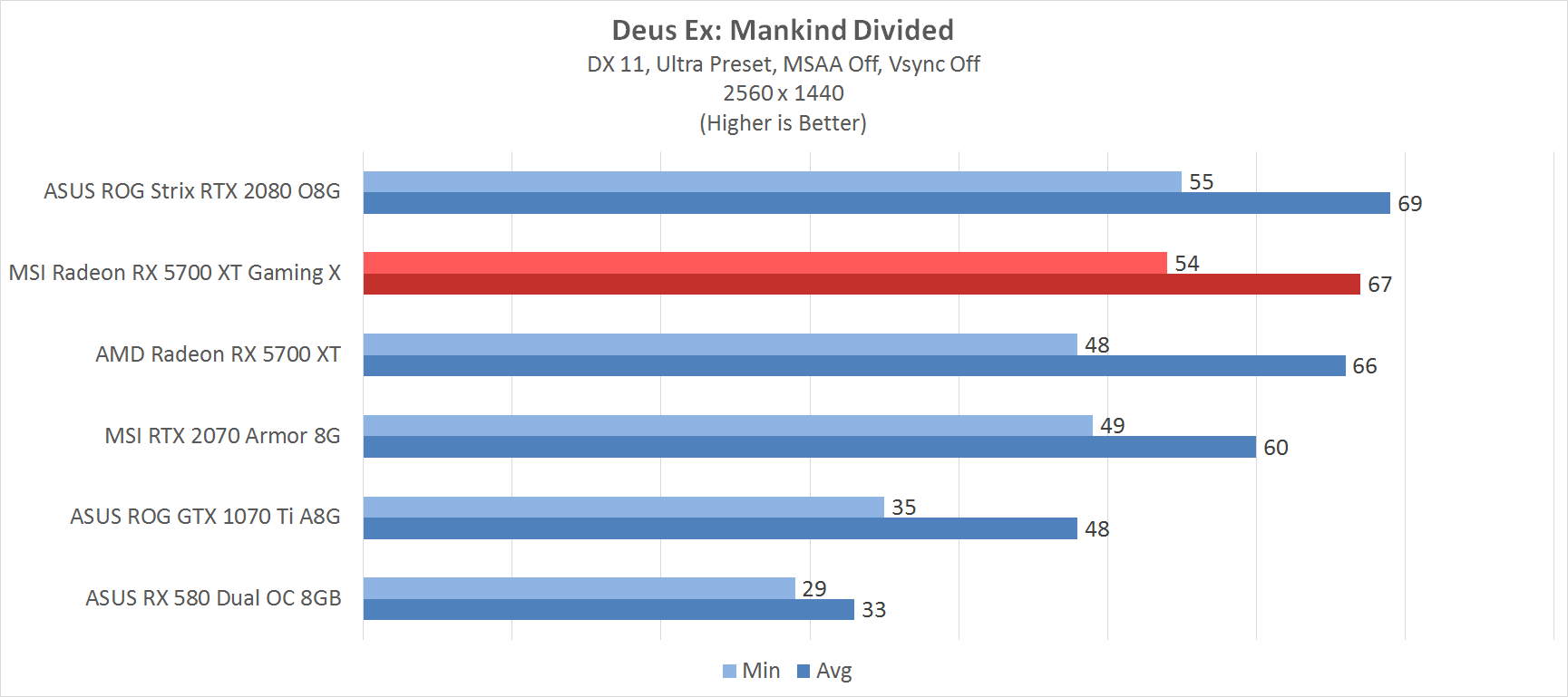
“Now an experienced covert operative, Adam Jensen is forced to operate in a world that has grown to despise his kind. Armed with a new arsenal of state-of-the-art weapons and augmentations, he must choose the right approach, along with who to trust, in order to unravel a vast worldwide conspiracy.”
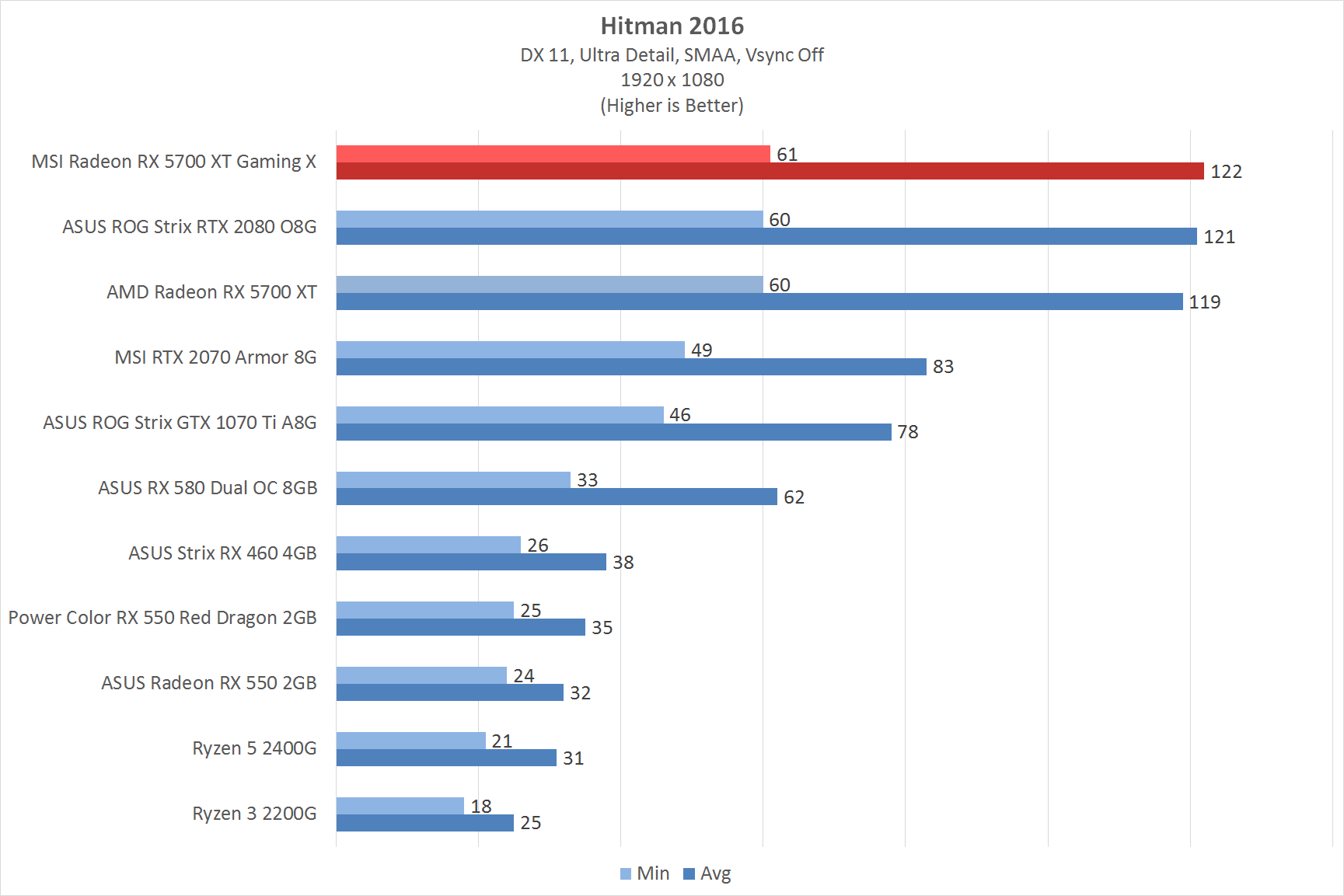
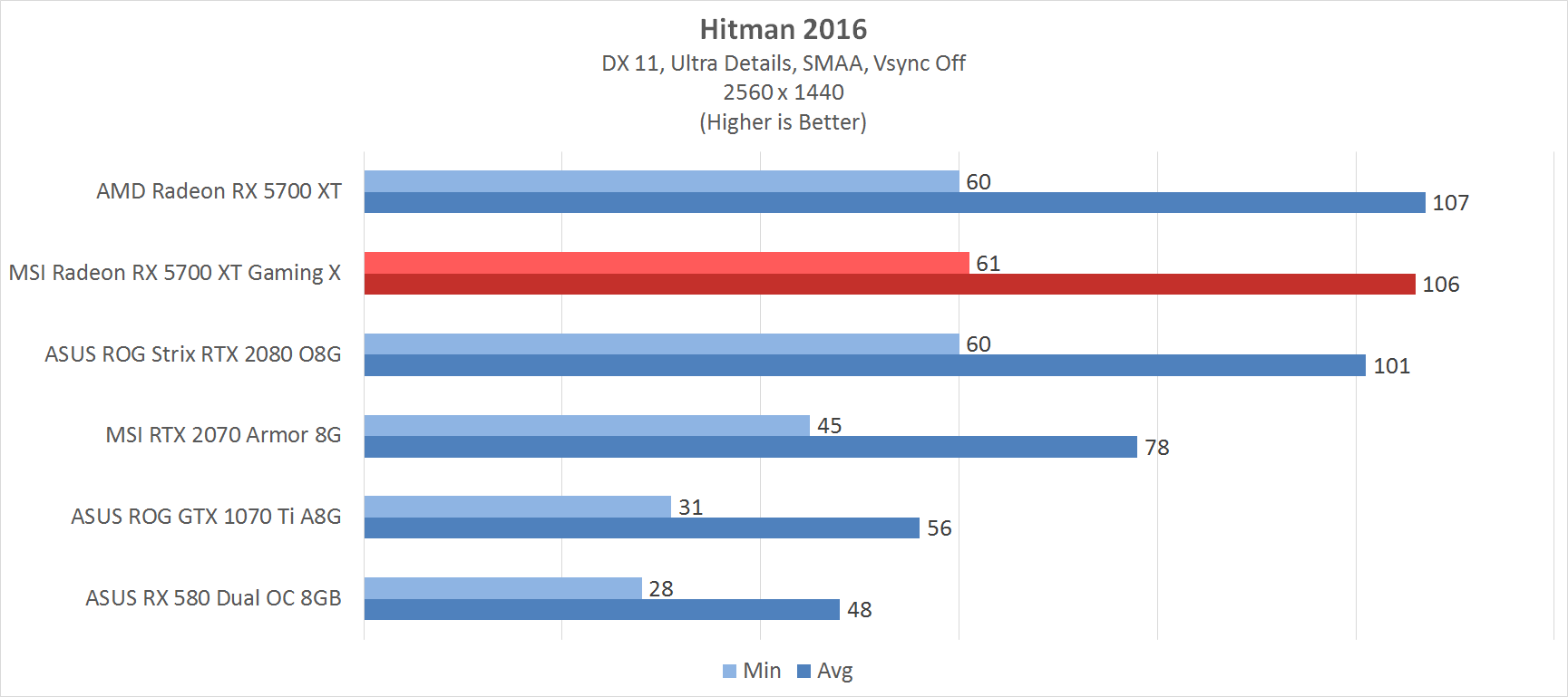
“There is a world beyond ours. Beyond nations, justice, ethics. It never sleeps. It exists everywhere. And once you enter….there is no going back. Welcome to the World of Assassination. You are Agent 47, the world’s ultimate assassin.”
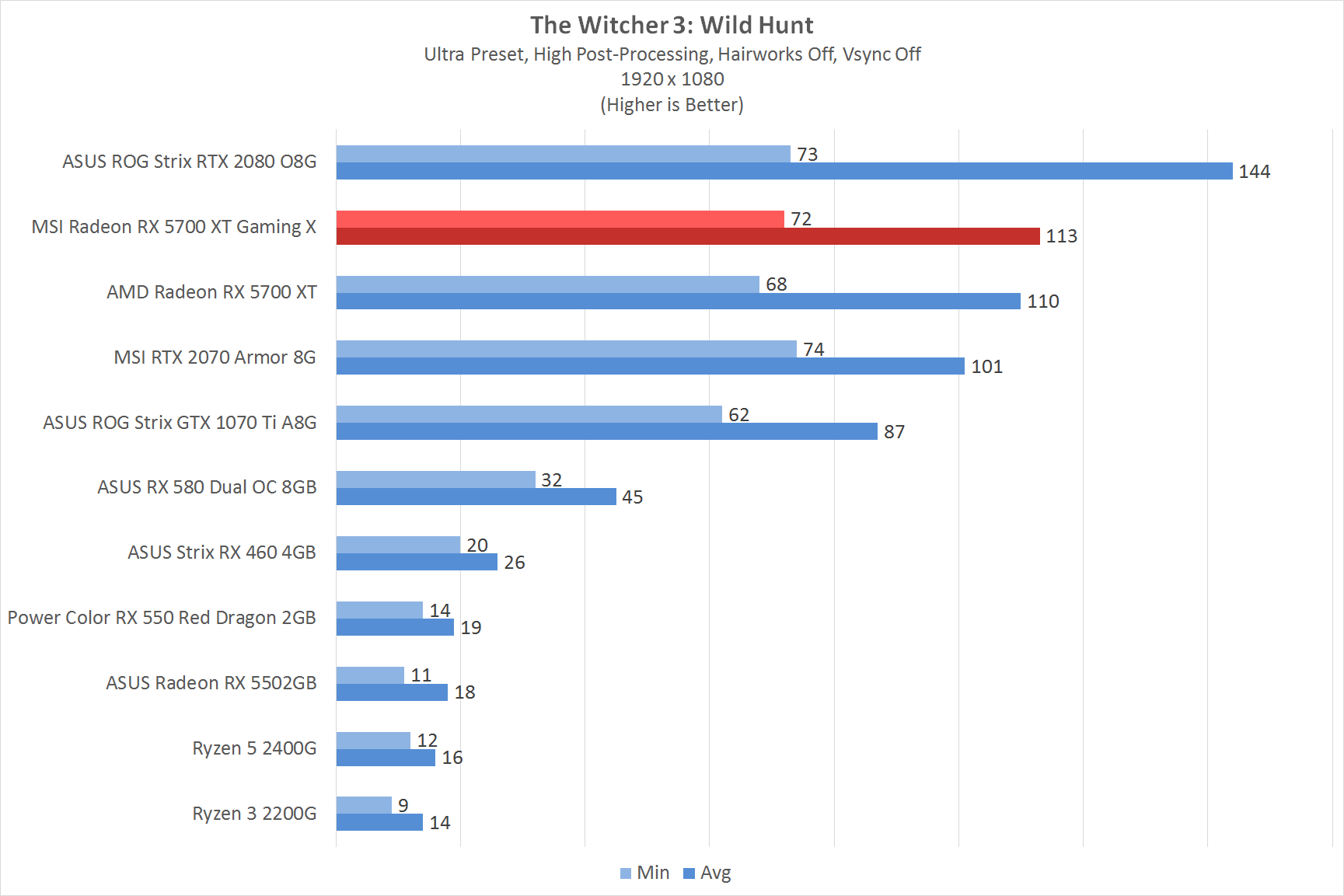
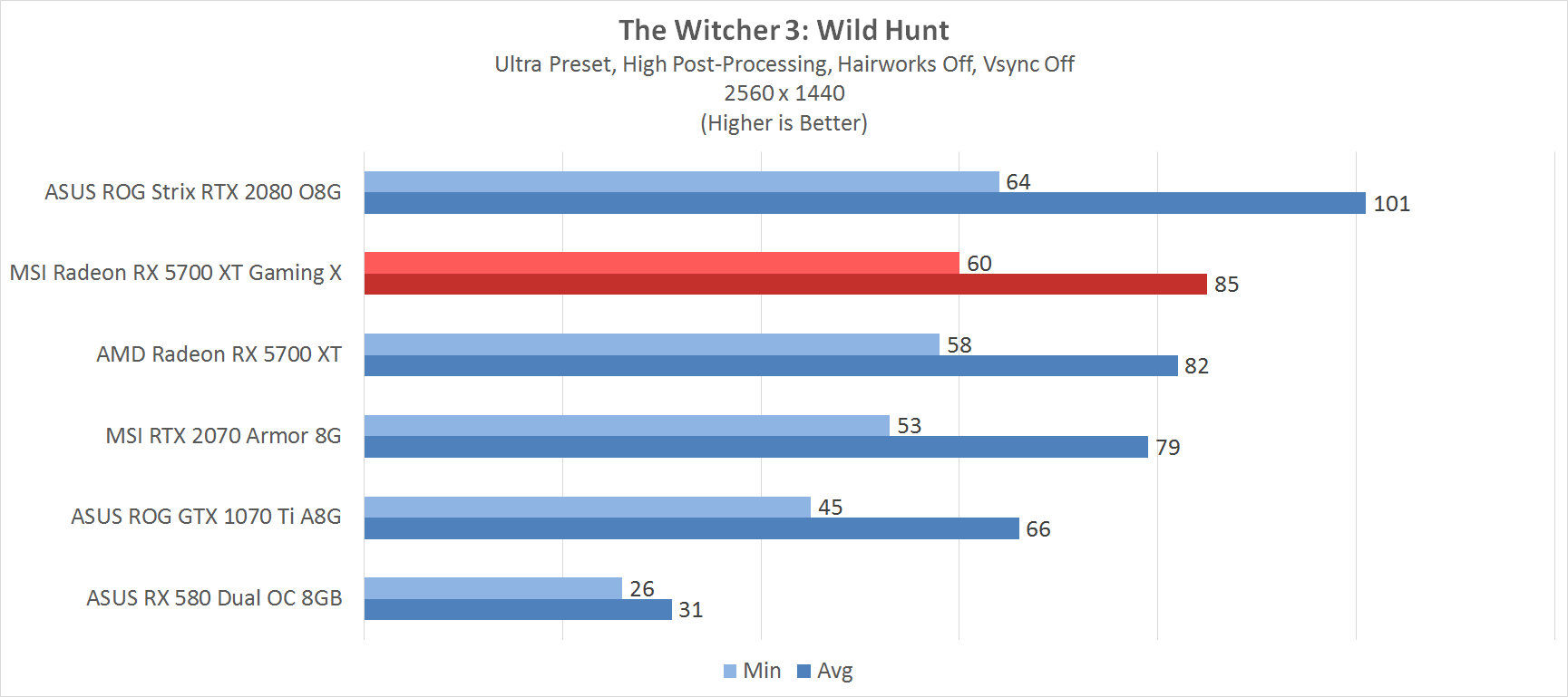
“The last entry in Geralt’s adventure, The Witcher 3: Wild Hunt aims to perfect The Witcher formula. A follow-up to The Witcher 2, which was also regarded for its technical marvel, The Witcher 3: Wild Hunt is a perfect candidate for a benchmarking tool as it runs consistently and stresses most cards with its beautiful graphics.”
As far as benchmarks go, the MSI Radeon RX 5700 XT Gaming X just trades blows with the vanilla AMD Radeon RX 5700 XT. It pulls out couple of frames ahead in some benchmarks and lags in others. Overall, the card performed as it was supposed to.

This is where all MSI’s efforts truly shine. It can’t be argued that the AMD Radeon RX 5700 XT was hot and loud thanks to its single fan configuration. Thanks to the TWIN FROZR 7 and all its improvements, MSI was able to bring down the temperature of the Radeon RX 5700 XT to 65°c.
Noise has been significantly cut down by MSI. Previously, the RX 5700 XT was a bit loud to our liking. This time around, noise problems has been eliminated. ZERO FROZR will also keep the card running silently if it’s on idle or only processing low-level graphics.
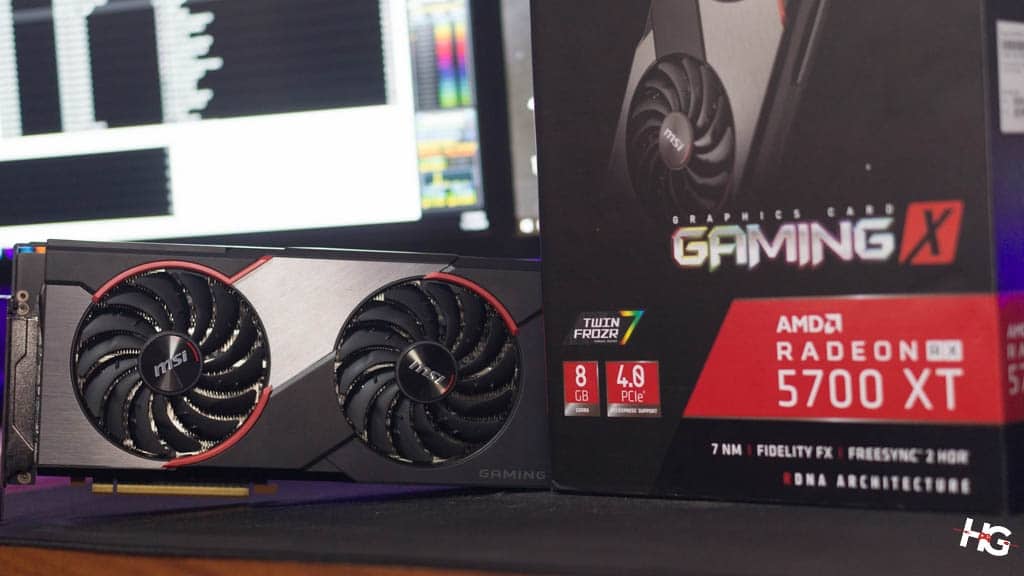
The original AMD Radeon RX 5700 XT offered a particularly good proposition to gamers with a high price-to-performance ratio. MSI is keeping that performance while improving almost every aspect of the RX 5700 XT.

Performance-wise, the MSI Radeon RX 5700 XT Gaming X is able to be better than the vanilla card, and in some cases, beat the an NVIDIA GeForce RTX 2080. Although it doesn’t have exotic technologies like Ray-Tracing, its sheer performance will still impress gamers and enthusiasts.
Priced at USD 399 or around PhP 26,000 in the Philippines, the MSI Radeon RX 5700 XT Gaming X improves on the Navi formula by cooling down AMD’s latest architecture to an acceptable degree while keeping the noise down.

Overall, the MSI Radeon RX 5700 XT Gaming X is a great addition to MSI’s portfolio while showing the power of AMD’s Navi architecture. This is why we’re giving this card our 100% Satisfying Graphics Card Award.
